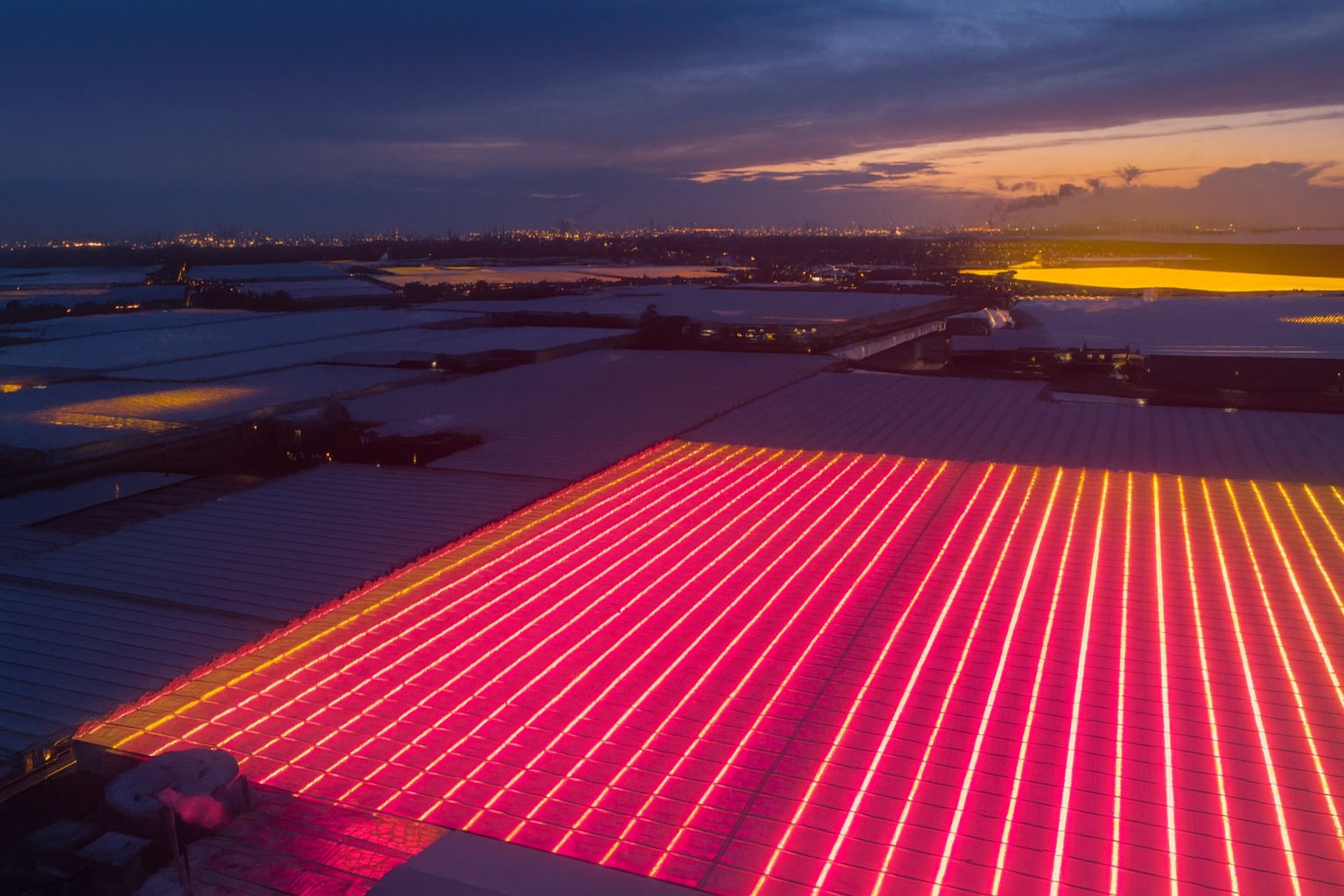
Benefits of supplemental lighting in greenhouses
Supplemental LED lighting has become an essential tool for modern greenhouse farming. Unlike natural sunlight, LED technology allows growers to precisely control intensity, photoperiod and distribution, ensuring more uniform and efficient crop development with lower operational costs.
1.- Extended photoperiod and higher yields
During seasons with limited daylight, supplemental LEDs keep photosynthesis active for longer hours, accelerating growth and enabling shorter crop cycles. With LEDMIO GT toplights and GTL series, growers can maintain consistent PPFD levels across the canopy even in winter.
2.- Energy efficiency and sustainability
Compared to HPS or fluorescent systems, LEDs deliver more usable light per watt (µmol/J) while significantly reducing electricity consumption and carbon footprint. LEDMIO’s high-efficiency drivers and optics ensure maximum light reaches the plants with minimal waste.
3.- Improved uniformity and quality
Uneven light means uneven crops. Supplemental LED lighting guarantees homogeneous PAR and DLI distribution, reducing variability and ensuring predictable harvests with consistent quality.
4.- Less radiant heat, greater flexibility
LEDs emit less radiant heat than traditional systems, which allows fixtures to be installed closer to the plants without causing heat stress. This is especially valuable in greenhouses with limited vertical space or multi-layer setups.
How LEDMIO Helps Growers Implement All This
- Light Planning & ROI: precise photometric design (PPFD/DLI), simulation of different scenarios, and return-on-investment calculations. See service.
- High-Efficiency Fixtures: toplighting and interlighting designed for uniformity and energy savings. GT Series and GTL Series.
- Automation and Controls: smart dimming solutions such as DimPAR with PAR sensors for DLI strategies, sunrise/sunset scheduling with DimTime, or simple manual dimming with DimLite.
- Full Integration: lighting systems designed to work seamlessly with irrigation, fertigation, and climate control.
- 360° Support: installation, commissioning, training, and after-sales service.
Conclusion: Supplemental LED lighting doesn’t just replace sunlight — it optimizes crop performance, improves consistency, and cuts operational costs. With LEDMIO, greenhouses are equipped with a complete end-to-end solution to face the challenges of future agriculture.